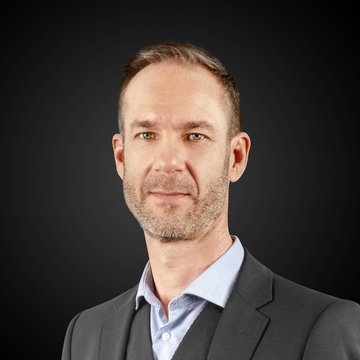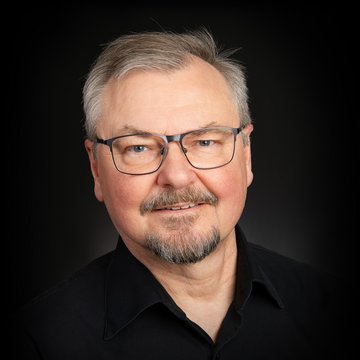Spiroergometry
Dr. Mario Weichenberger, Preventive and Rehabilitative Sports Medicine, Technical University of Munich
Physical Activity, Energy Metabolism, and Oxygen Absorption
Movement during physical activity is only possible due to complex interaction between different skeletal muscles. The energy required for muscle contractions can be produced anaerobically (without oxygen) with a significant increase in lactate concentration in the blood or during oxygen consumption through the so-called aerobic burning of carbohydrates (glucose) or fats (fatty acids). With increasing intensity of physical activity (e.g., during endurance exercise), the energy demand of the muscle cell increases, which is covered by an increase in oxygen absorption. The more oxygen working muscles can absorb, the more energy can be supplied for muscle contractions and the greater the maximum endurance capacity is.
Factors Influencing Oxygen Absorption
The oxygen absorption of humans depends on the exchange of gas between the lungs and blood, the oxygen transportation capacity of the blood (hemoglobin), the distribution of blood in the body (circulation), and the oxygen absorption capacity of muscle cells (mitochondria density and aerobic enzyme capacity). Endurance training improves all of these influential factors. For this reason, endurance athletes feature particularly high maximum oxygen absorption (VO2max or VO2peak).
Oxygen Absorption and Carbon Dioxide Release
Inhaled air and exhaled air differ in particular in their concentration of oxygen and carbon dioxide: While inhaled air is rich in oxygen (O2) and contains little carbon dioxide (CO2), the composition of exhaled air is exactly the opposite. The difference is due to the fact that the skeletal muscle consumes oxygen during physical activity and releases CO2. Depending on the intensity of physical activity, the breakdown of glucose and fatty acids described above produces different amounts of CO2. Based on the ratio of CO2 release and O2 absorption (respiratory exchange ratio), it is possible to analyze which form of energy supply dominates and how high the percentage of metabolized substrates is. This makes it possible to obtain the optimal training intensity or percentage of fat burning at different exercise intensities.
The measurement of O2 absorption and CO2 release during physical exercise makes a differential analysis of the function and performance of the lungs, the circulatory system, and the exchange of gas in the body possible and is, therefore, of particular importance for both patients and athletes in performance diagnostics and optimization.
Cardiopulmonary Exercise Testing – Analysis of Oxygen Absorption during Exertion
Cardiopulmonary exercise testing is a diagnostic method in which respiratory gas analysis is carried out during increasing exertion, generally on a bicycle or treadmill ergometer (ergometry: from the Greek, ergon means work and metron means to measure). The physical exertion starts out very low and is continually increased for a timespan of approximately eight to twelve minutes to physical exhaustion. During the physical exertion, the test person wears a breathing mask over his/her mouth and nose and the concentration of oxygen and carbon dioxide in the inhaled and exhaled air, the breathing frequency, the tidal volume, the respiratory minute volume (breathing frequency x tidal volume), and the heart rate are continually analyzed.
Thanks to modern measurement technology, all measurement parameters are shown in real time, which makes it possible to carry out a detailed analysis during the physical exertion.
Results of Cardiopulmonary Exercise Testing
The maximum oxygen absorption (VO2max) achieved at the end of the endurance test is an important indicator in determining endurance capacity. The best endurance athletes achieve VO2max values of up to 80 ml/min/kg, whereas non-athletes can absorb only approximately 45 ml/min/kg of oxygen. In addition, based on changes, for example, in the relationship between oxygen absorption (VO2) and carbon dioxide release (VCO2) or in the relationship between respiratory minute volume (V’E) and carbon dioxide release (VCO2), so-called ventilatory thresholds can be determined. With the help of so-called 9-panel-plot according to K. Wasserman, the thresholds can be determined and other changes analyzed during the endurance test (see Fig.). The ventilatory thresholds can be used to determine optimal training intensity and are, therefore, of particular importance when managing endurance training for patients and athletes. Cardiopulmonary exercise testing is, therefore, particularly well-suited for both the differential analysis of performance and training management. For this reason, it is commonly used in sports medicine.
Technical University of Munich Team
The chair of the preventive and rehabilitative sports medicine department at the University Hospital rechts der Isar of the Technical University of Munich (executive medical director and university professor, Prof. Dr. Martin Halle) offers state-of-the-art university hospital diagnostics combined with highly-qualified medical and sports science know-how at both sites – in Olympiapark and at the hospital rechts der Isar. Each individual – from patients to professional athletes – receives optimal medical care and advice, including a personal recommendation regarding exercise, training, and nutrition.
LASER COMPONENTS Nordic - Your competent partner for optical and optoelectronic components in Sweden, Norway, Finland, Denmark, and Iceland.
Welcome to LASER COMPONENTS Nordic AB, your expert for photonics components. Each product in our wide range of detectors, laser diodes, laser modules, optics, fiber optics, and more is worth every Crown (SEK). Our customized solutions cover all conceivable areas of application: from sensor technology to medical technology. You can reach us here:
Box 14001 / Skårs led 3
SE-400 20 Göteborg
Sweden
Phone: +46 (0)31 703 7173
Email: info(at)

